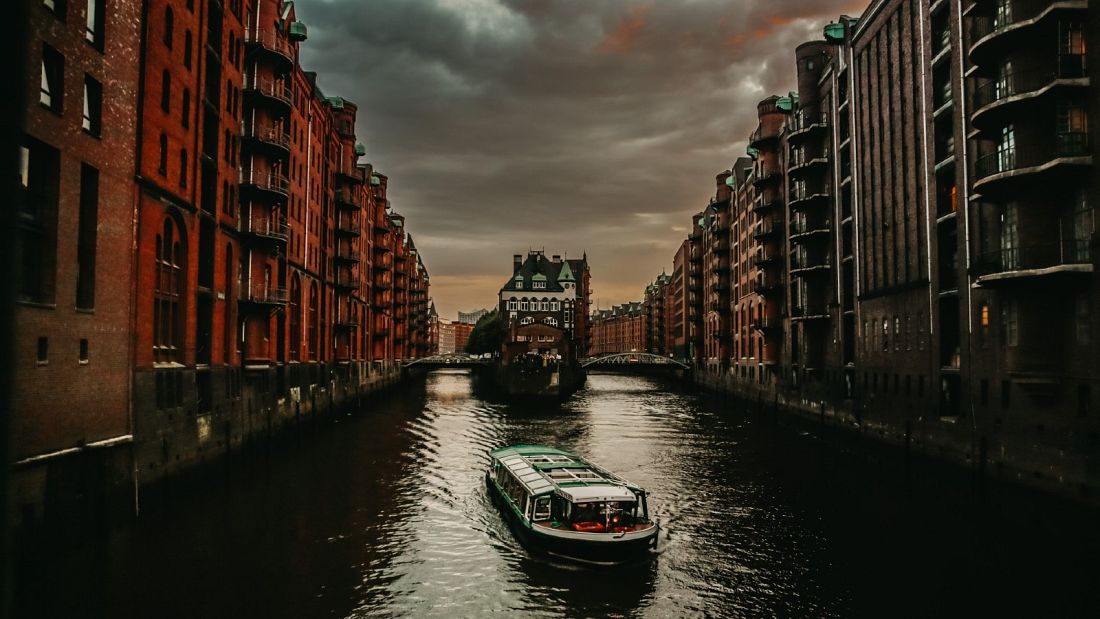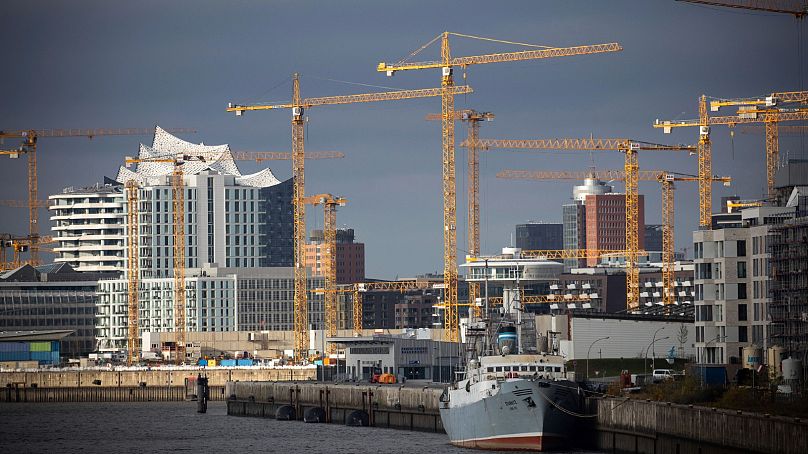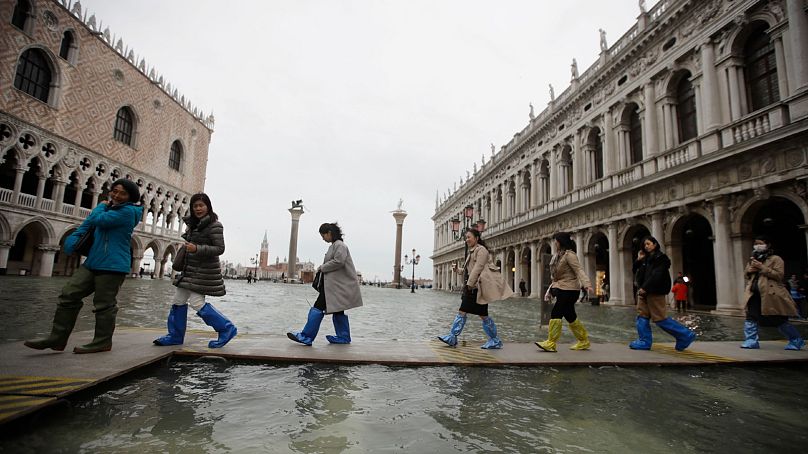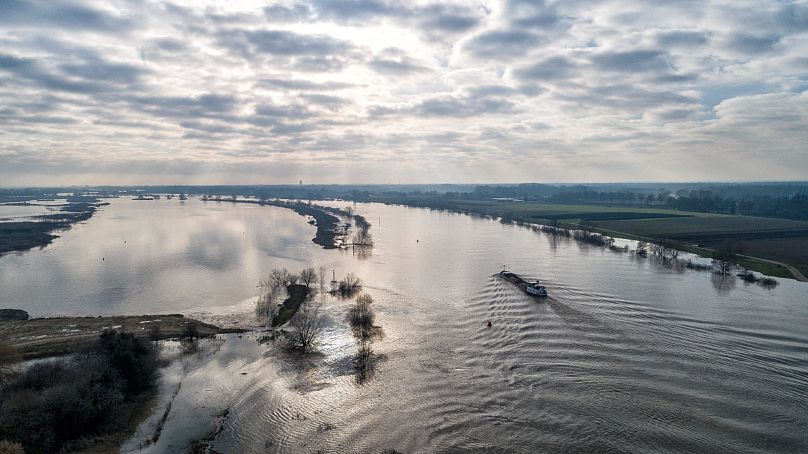Dykes, storm gates and sponge parks: How can cities prevent flooding?
The devastating floods that hit Germany and Belgium are a stark reminder of the dangers low-lying cities across the world face, as climate change brings more extreme weather.
Research has shown that a warmer atmosphere can hold more moisture, paving the way for sudden torrential downpours that engorge waterways and cause them to overflow.
The recent damage and loss of life has caused soul-searching in Germany, where survivors and officials say the worst-hit areas were caught unprepared.
So how can European countries and cities protect themselves from flooding?
Here’s a quick overview of how some are trying to cope with rising water levels.
Build high: Hamburg
In Europe’s second-largest port, the new district of HafenCity is built right on the river Elbe - but it’s not surrounded by dikes nor cut off from the water. Instead, the area is built on raised plinths, so that residents live about 8 metres above sea level.
HafenCity is already home to some 6,000 residents and it draws some 15,000 workers each day. The neighbourhood aims to accommodate about 15,000 residents and 45,000 workers by the time its construction is complete.
Build smart: Rotterdam
The Dutch city of Rotterdam, Europe’s largest port, lies at the confluence of the Rhine, Meuse, and Scheldt rivers. As ninety per cent of it sits below sea level, the city is aiming to become "climate-proof" by 2025.
Becoming more resilient to floods includes beefing up its coastal protection of dikes and storm surges and greening river banks and roofs, whilst converting garages, parks and gardens into temporary reservoirs when water levels surge.
Rotterdam water square: recreation in non-flood state, flood storage during high rainfall events #bluegreenadvantage pic.twitter.com/43o9Tq0PY9
— UrbanFloodResilience (@BlueGreenCities) April 8, 2016
Fight the tide: Venice
The Italian city of Venice is used to floodwaters, and its world-famous acqua alta is even a draw for some tourists. But severe damage from floodwaters in 2019 shone a light on a much-delayed flood protection project, Mose, that was drawn up in 1984 and still hasn’t been completed.
It’s designed as a network of underwater barriers which, when activated, rise above the surface and prevent surging tides from the Adriatic Sea from flooding the Venetian lagoon.
Unfortunately, the project has been plagued by delays, accusations of corruption, and warnings that it may not be fit to deal with the sort of challenges that recent climate-change models predict.
A nice case study of our project produced here https://t.co/fJDVAboGJE
— GrowGreen Manchester (@growgreenMCR) June 15, 2021
Opened in June 2020 as part of the EU-funded GrowGreen initiative, it’s nicknamed "the park that drinks water" because it redirects floodwaters from the surrounding streets through a series of swales and into specifically designed rain gardens.
Source: Euronews









